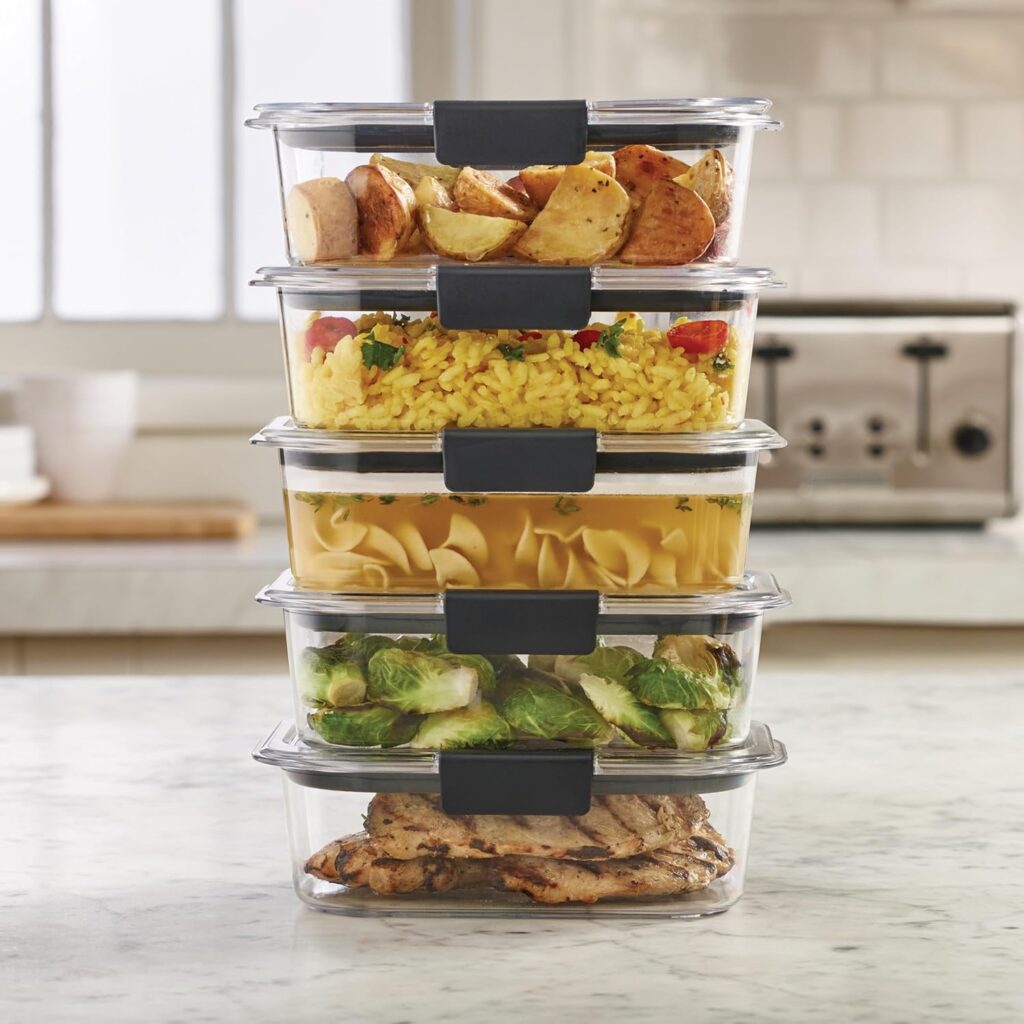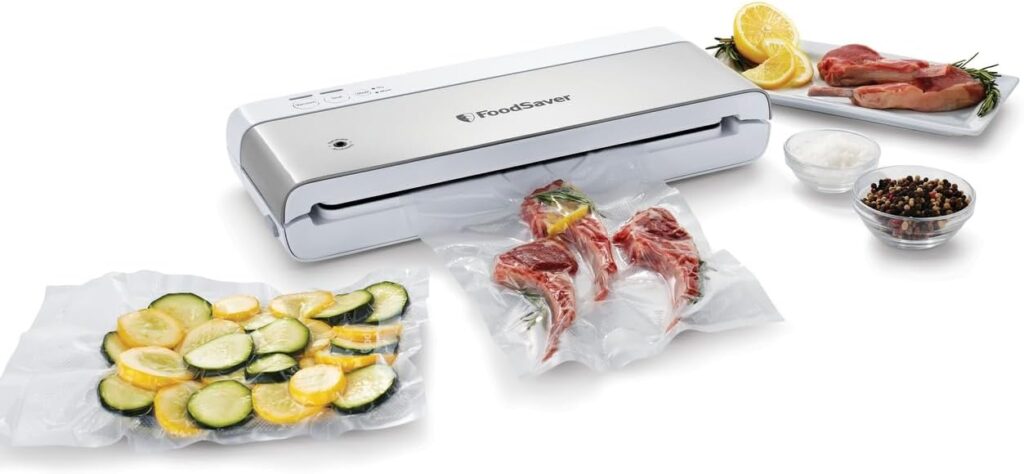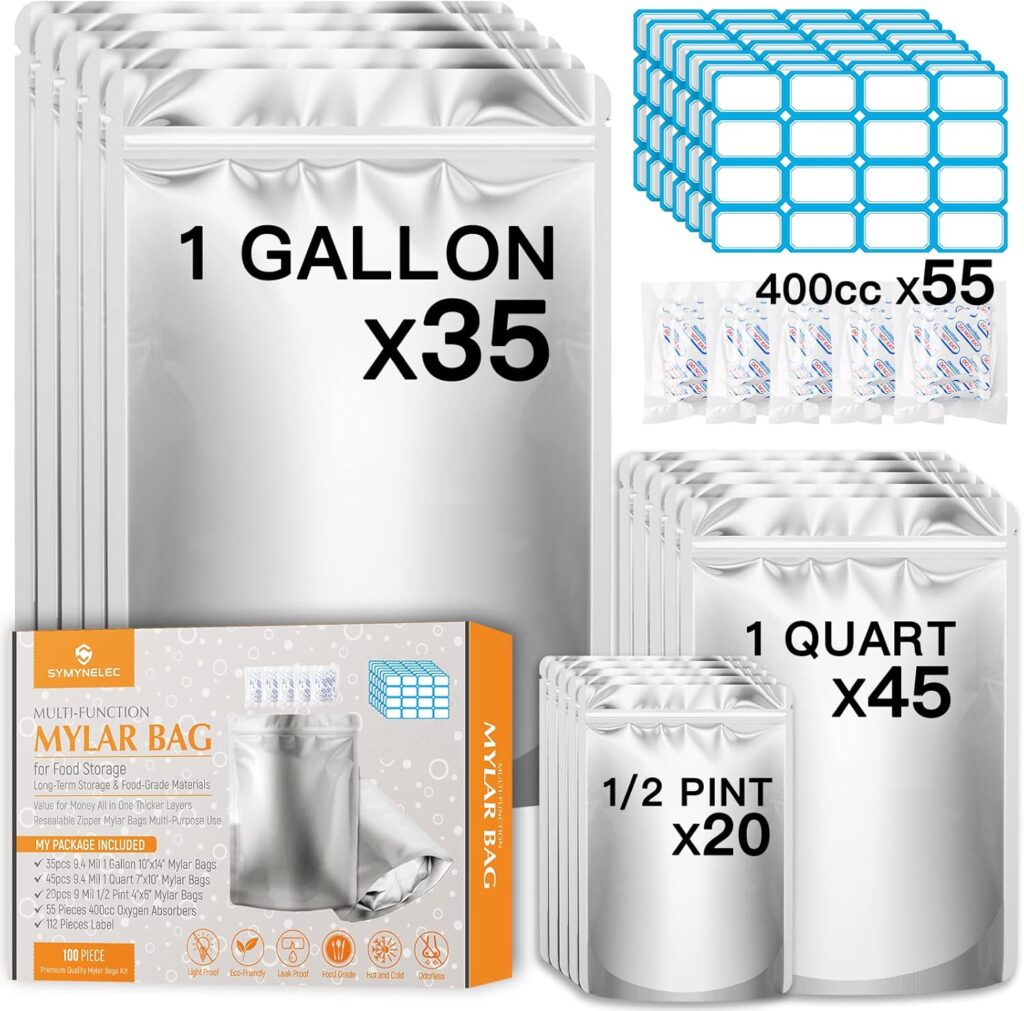Essential Factors in Long-Term Storage
Why do we need food storage for survival? Because in a crisis—whether it’s a natural disaster, supply chain disruption, or unexpected emergency—access to fresh food can vanish in an instant. Having a reliable stash of non-perishable, well-stored food means you and your loved ones can stay nourished without relying on outside help. Long-Term Food Storage Methods for Survival Needs help ensure you’re prepared, calm, and self-sufficient no matter what comes your way. It’s not just about stockpiling—it’s about being smart, strategic, and ready for anything. So, an Emergency Preparedness Plan is vital. It’s not just about reacting to disaster—it’s about being ready before it strikes
Insulated Storage Containers
Insulated containers are a game-changer for keeping food in tip-top shape over time. They’re built to fend off crazy weather and sogginess, making them a must-have for not just food, but also other delicate stuff like medicines or gadgets.
You’ve got your regular-sized ones, but if you need a bit more room, there are also high-cube versions. These are a foot taller and perfect when you’ve got bulkier items or when stability is key. Here’s a quick peek at how they match up against each other:
| Container Type | Dimensions (feet) | Ideal Use |
|---|---|---|
| Standard Insulated Container | 20 or 40 | Everyday stuff that doesn’t like heat or cold |
| High-Cube Insulated Container | 40 (+1) | Great for more volume or bigger stuff |
With these options, anyone planning for emergencies or just wanting to be prepared can find a fit for their needs.
Ideal Container Sizes
Picking just the right size for your storage container is like finding the perfect pair of shoes—it makes all the difference. The choice boils down to what you’re storing and how much room you’ve got. Small containers can help with portioning, while the big ones are pretty good for stocking up. Here are some sizes to think about:
| Container Size | Recommended Use |
|---|---|
| 1-quart | Things like dry beans and grains |
| 2.5-quart | Good for canned stuff or freeze-dried meals |
| 5-quart | For larger packs or family dinners |
| 10-quart | Perfect for big bundles like masses of pasta |
Get your head around both the techy stuff like insulation and the smart choices around sizes, and you’re set for solid long-term food keeping. Curious about what foods last the longest? Jump into our picks on best foods for long-term storage, or check out freeze-dried food for survival and canned food for long-term storage. If playing it handy and crafting your own stash is your thing, hop over to diy long-term food storage.
Choosing the Right Containers
Picking the best containers for long-term food storage is key to keeping your food lasting longer and staying safe. You’ll need to think about how airtight they are, if they’re stackable, safe for the freezer, and whether they’re easy on the planet.
Airtight Containers
If you want your dry stuff like flour, sugar or cereal to stay fresh, air-tight containers are your go-to. These nifty gadgets lock out the air and moisture, leading to less chance of spoilage or those little pesky insects creeping in (Droppe). They’re golden for keeping things in tiptop shape.
| Container Type | Benefits |
|---|---|
| Airtight Containers | Keeps goodies fresh, blocks out moisture and bugs, great for dry stuff. |
Stackable Containers
Got a small space but want to hoard all the food? Stackable containers to the rescue! They fit together neatly, saving all that room you’ve got in your pantry or storage area (Droppe). More space means more goodies, and everything stays tidy and easy to find.
| Container Type | Benefits |
|---|---|
| Stackable Containers | Saves space, super organized, smart design. |
Freezer-Safe Containers
If you’re freezing stuff for the long haul, you’ll need containers that can handle the cold without breaking. Look for ones with airtight seals to stop freezer burn and keep food as good as new. They’re a game changer if you’re into storing leftovers or thinking about freeze-dried food for survival (Droppe).
| Container Type | Benefits |
|---|---|
| Freezer-Safe Containers | Survives the cold, stops freezer burn, perfect for long freeze. |
Sustainable Containers
Want to save the planet while storing food? Go green with biodegradable, compostable, or recyclable containers. There are plenty of options that don’t skimp on functionality, like insulated paper or eco-friendly plastics (Hot Cup Factory). For everyday use, glass and stainless steel are fantastic, while disposables can work for big gatherings or parties.
| Container Type | Benefits |
|---|---|
| Sustainable Containers | Kind to the Earth, keeps function, great for all needs. |
By thinking through these options, anyone can nail the perfect long-term food storage containers for peace of mind and handy meal prep.
Top Picks from Testing
Choosing the right long-term food storage containers is vital for keeping your emergency food fresh and safe. We checked out a bunch of options, and these ones really stood out for staying tough and easy to use without any major drama.
Rubbermaid Brilliance Food Storage Containers
The Rubbermaid Brilliance Food Storage Containers are reliable plastic containers known for their impressive durability. A Good Housekeeping analyst has trusted these for years, with no stubborn stains in sight. Perfect for lunches and general storage, these containers are like your trusty sidekick in the kitchen.
You can grab a set of Rubbermaid Brilliance plastic containers for everyday use—they’re airtight, leak-proof, and stain-resistant, making them perfect for your long-term storage stash.
| Feature | Details |
|---|---|
| Material | Plastic |
| User Feedback | Keeps stains at bay |
| Usage | Lunch packing and general storage |
Snapware Total Solution Plastic Food Storage Containers
The Snapware Total Solution Plastic Food Storage Containers made a good impression despite a minor hiccup with reheated pasta sauce stains. The stackable design keeps your fridge in tip-top shape, and at under $15, they won’t break the bank.
| Feature | Details |
|---|---|
| Material | Plastic |
| User Feedback | Has a love-hate thing with pasta sauce |
| Price | Under $15 |
| Features | Loves a neat, organized fridge |
Rubbermaid Brilliance Glass Food Storage Containers
The Rubbermaid Brilliance Glass Food Storage Containers are champs for anything that needs reheating, thanks to their hardiness up to 450˚F in the oven. They’re a bit heavier, but their see-through style and knack for stacking make them a breeze for organizing spaces both big and small.
| Feature | Details |
|---|---|
| Material | Glass |
| Oven-Safe | Up to 450˚F |
| User Feedback | Stays shiny and stain-free |
| Design | Stackable with a clear advantage |
Stasher Silicone Bags
The Stasher Silicone Bags bring a splash of color and a touch of genius to food storage. Dishwasher, freezer, microwave, and oven–they handle it all. However, they had a run-in with some food dyes. With various sizes and vibrant colors, these bags are ready for just about anything.
| Feature | Details |
|---|---|
| Material | Silicone |
| Safe For | Dishwasher, freezer, microwave, oven |
| User Feedback | Colorful but a bit picky with pigments |
| Variety | Comes in all shapes and shades |
These gems for long-term food storage containers shine in the eyes of those preparing for anything. Whether you’re stocking up your pantry or planning ahead for emergencies, these picks promise top-notch performance and practicality.
Material Considerations
When picking out long-term food storage containers, the type of material you go for really matters. It not only impacts how long your food stays fresh but also how safe it is to eat. From the common aluminum and stainless steel options to the glass versus plastic debate, there’s a lot to think about.
Aluminum and Stainless Steel
Aluminum and stainless steel are big hits for a reason: they’re tough and do a decent job of holding onto heat for quite some time, making them great for hot dishes.
| Material | Why It’s Great |
|---|---|
| Aluminum | Super light, holds heat well, good for hot meals |
| Stainless Steel | Tough and durable, not reactive, keeps heat locked in |
Aluminum is the featherweight champ, easy to handle but prone to dents if you’re not careful. Stainless steel, though, is the muscle of the two—durable with a long lifespan. If you’re someone who values long-lasting gear, stainless steel is where you’d want to invest.
But when it comes to cold dishes, like salads or chilled drinks, plastic and insulated paper containers do the job better. They’re not only lighter but also make it easier to lug plenty of stuff around, especially if things get hectic.
Glass vs. Plastic
Choosing between glass and plastic is like deciding between rock and roll—their ups and downs change with your playlist of needs.
| Material | Weight | Price | Damage Risk |
|---|---|---|---|
| Glass | Heavy | Usually more expensive | Chips and breaks easily |
| Plastic | Lighter | Usually cheaper | Less likely to break |
Glass is your best bet when it comes to keeping food pristine—it’s not going to mix unwanted flavors or chemicals into your meals. The downside? It’s heavy and kinda fragile. Plastic, however, is a lightweight hero, easy to toss in a bag and go. It’s more budget-friendly but isn’t the best with super-hot food due to possible chemical leaks.
Ultimately, picking between glass and plastic comes down to your lifestyle. Need portability? Go plastic. Into sustainability and don’t mind the extra weight? Glass might be your jam.
For true peace of mind with your food reserves, you may wanna check out options like freeze-dried food for survival and canned food for long-term storage to keep meals organized and your pantry well-stocked.
Environment and Shelf-Life
Keeping your foods fresh for the long haul isn’t just about tossing them into the fridge and calling it a day. The environment you store your grub in is key. Using the right refrigeration and freezing tricks can really stretch out how long your foods stay good. Plus, remember the FIFO (First In, First Out) rule to make sure you’re eating your way through what you’ve got before it goes bad. This way, you waste less and dodge foodborne nasties.
Proper Refrigeration and Freezing
Nobody wants funky bacteria growing on their food, right? So, keeping stuff at the right temp is a must. Your perishable goodies should chill in the fridge at 40°F or lower. Meanwhile, the freezer has to stay at 0°F or colder. Dry foods need some love too; store them in a cool, dark place away from heat and moisture (Faster Capital).
Here’s a quick and handy chart for how to store different snacks and meals:
| Food Type | Recommended Temperature | Storage Duration |
|---|---|---|
| Perishable Foods | 40°F or lower | 3-4 days in fridge |
| Frozen Foods | 0°F or lower | Up to 6 months |
| Dry Goods | Cool, dry spot | Depends (different for each type) |
FIFO Rule
The FIFO rule might sound fancy, but it’s super simple. Use what you bought first, first. You move newer stuff to the back and snack on the older stuff before it goes to waste (Faster Capital).
Here’s how to nail the FIFO game:
- Label Containers: Smack a date on those containers when you buy or freeze them.
- Organize Storage: Put older stuff upfront on the shelves where you can see and grab them easy.
- Regular Check-Ups: Give your pantry and fridge a once-over every now and then to make sure nothing’s hiding and getting old.
By keeping your storage spaces in check and using tricks like the FIFO rule, you can nail long-term food storage. Whether you’re prepping for unexpected company or just making sure you’ve got what you need, you’ll keep your kitchen game strong. For more tips, check out our guide on suitable long-term storage methods.
Smart Food Storage Solutions
Keeping your grub sorted out is more than just tossing cans in the pantry. For those gearing up for any unexpected twists of fate in our food supply, smart storage can keep your belly happy and reduce throwing out perfectly good stuff.
Efficient Organization
Getting your food stash in order can save time and make life a tad easier. It’s like a puzzle; everything has its place. And if you’re feeling overwhelmed, these pointers might help:
- Sort by Type: Stick your grains with grains, your proteins with proteins. Let the beans mingle with beans.
- Label Containers: Slap a label on containers showing what’s inside and when they’re past their time. It’s like giving each package its name tag and birthday.
- Clear Containers: See-through boxes are like windows into your stash of snacks. No need for the ol’ shuffle dance to find the last bag of chips.
Sortin’ stuff this way means fewer surprise “What’s for dinner?” disasters. It’s not just about storage, it’s more about knowing what you’ve got when hunger strikes (Faster Capital).
Inventory Management
Staying on top of what you’ve got and when it expires is good sense. It keeps you from panic-buying those extra jars of salsa when you already have them buried deep.
Here’s the lowdown on keeping inventory right:
- Go Digital: Use apps or spreadsheets to list what’s stashed away, how many, and when to eat ’em by.
- FIFO: First In, First Out – it’s a golden rule. Older stuff first, newbies later. Essential if you’re all about canned goods and their long life.
- Regular Check-Ins: Make it routine. Scan your stocks every now and then. Update when something new’s added or old stuff’s noshed.
Put these two together, and not only is eating stress-free, it means less food goes to the bin, too. Plus, if you’re the hands-on type with DIY long-term food storage, a bit of forethought means you’re ready for whatever curveball life throws your way.
Long-Term Storage Tricks
Ever wondered how to keep food good for the long haul? Let’s talk smart tricks to keep grub fresh and tasty. Freeze drying and knowing a bit about what affects shelf life are top strategies for making food last.
Freeze Drying
Freeze drying might sound like something out of a sci-fi flick, but it’s quite practical. Think about it like this: you take food, freeze it solid, then zap out the water without it ever going soggy. This keeps its flavor, look, and nutritious goodness locked in for ages. Just think about those astronaut meals – same deal. Unlike regular dehydrated food, freeze-dried stuff has zero moisture, which means no burglars like bacteria can crash its party (Homesteading Family).
To ace freeze drying, it’s about what you store it in. You gotta seal it tight, imagine it as keeping a loose pet in a secure pen – no escapes allowed. A reliable vacuum sealer like the FoodSaver Sealing System helps keep freeze-dried meals airtight and shelf-stable for years.
| Freeze-Dried Food | Shelf Life | Storage Spot |
|---|---|---|
| Fruits | 25-30 years | Cool, shady hideout |
| Veggies | 25 years | Dry, moody nook |
| Meats | 20-25 years | Sealed-up safe |
Crunchy is the sign of freshness here, so if the texture’s off and it feels mushy, you better toss it. Rarely, freeze-dried foods can hide nasties like botulism, so always keep a watchful eye (Homesteading Family).
Shelf Life Know-How
Want your food around long enough that you’re dusting it? Consider these four main culprits that mess with how long your food lasts:
- Packing: Pick packaging like you’d pick a good umbrella – airtight and tough against light and water. Keeps the food quality on point.
- Storage Setup: A quiet, dark cooler space does wonders. Like horror movies, heat is scary – avoid at all costs to keep food alive and kicking.
- Heat Hassles: High temps? Food freaks out and spoils. Think of insulating storage like a cozy sweater on a chilly day – critical.
- Oxygen Overload: Oxygen can turn food sour. Suck that air out with vacuum sealers to keep food fresh and friendly. Use Mylar bags with oxygen absorbers to lock out air and light—these are favorites for dry goods and freeze-dried foods meant to last decades.
Mastering these tricks and tips ensures your pantry is ready for anything, be it a rainy day or the zombie apocalypse. Want more food-for-thought? Check out our guide to best foods for long-term storage and get crafty with diy long-term food storage.
Quality Assessment in Food Storage
Getting the hang of checking stored food quality can be a lifesaver, especially if you’re serious about keeping your emergency pantry top-notch over the long haul. Let’s chat about two must-know tips: how to tell if food’s fresh and how to keep it from going bad.
Checking Freshness
When you’ve got a stash in long-term food storage containers, it’s smart to give it an occasional once-over to make sure it’s still fresh. Stick your food in the right containers – think plastic or glass with tight lids – to keep it safe. These need to be spick-and-span and not janky so everything inside stays shipshape.
A handy-dandy checklist for freshness:
- Visual Check: Spot any weird colors, mold, or funky patches? Time to toss that food.
- Sniff Test: If it smells off or not quite right, trust your nose that it’s no good.
- Date Labels: Write down when you packed it and keep an eye on expiration dates. Go with FIFO (First In, First Out) so the older stuff gets eaten first, cutting down on waste and keeping food bugs away.
| Food Type | Shelf Life (Fridge) | Shelf Life (Freezer) | Storage Tips |
|---|---|---|---|
| Fresh Produce | 3-7 days | Freezing not advised | Use up within a week for best taste. |
| Cooked Leftovers | 3-4 days | 6 months | Airtight containers are your BFFs. |
| Freeze-Dried Food | Lasts forever if done right | Lasts forever if done right | Look out for meh texture or taste signs. |
Prevention of Spoilage
Stopping spoilage is all about mastering where and how you stash your grub. Keep perishables chilled at 40°F or lower, and set the freezer to 0°F or lower to keep nasty bacteria from throwing a party in your food.
Here’s how to keep spoilage at bay:
- Go Airtight: Containers that lock out moisture and air keep your food fresher, longer.
- Don’t Cram Containers: Give your food some breathing room at the top; it might swell up a bit when frozen.
- Dry Good Etiquette: Store somewhere cool and dry, away from heat hands off the sun, to keep stuff nice and fresh.
- Rotate Stock Routinely: Give the older stuff priority so it doesn’t sit around waiting for the compost heap.
Follow these nuggets of advice to make your stored food last longer and taste better when you whip up meals from it. Hungry for more smarts on food storage? Check out our guides on best foods for long-term storage, freeze-dried food for survival, and canned food for long-term storage.





